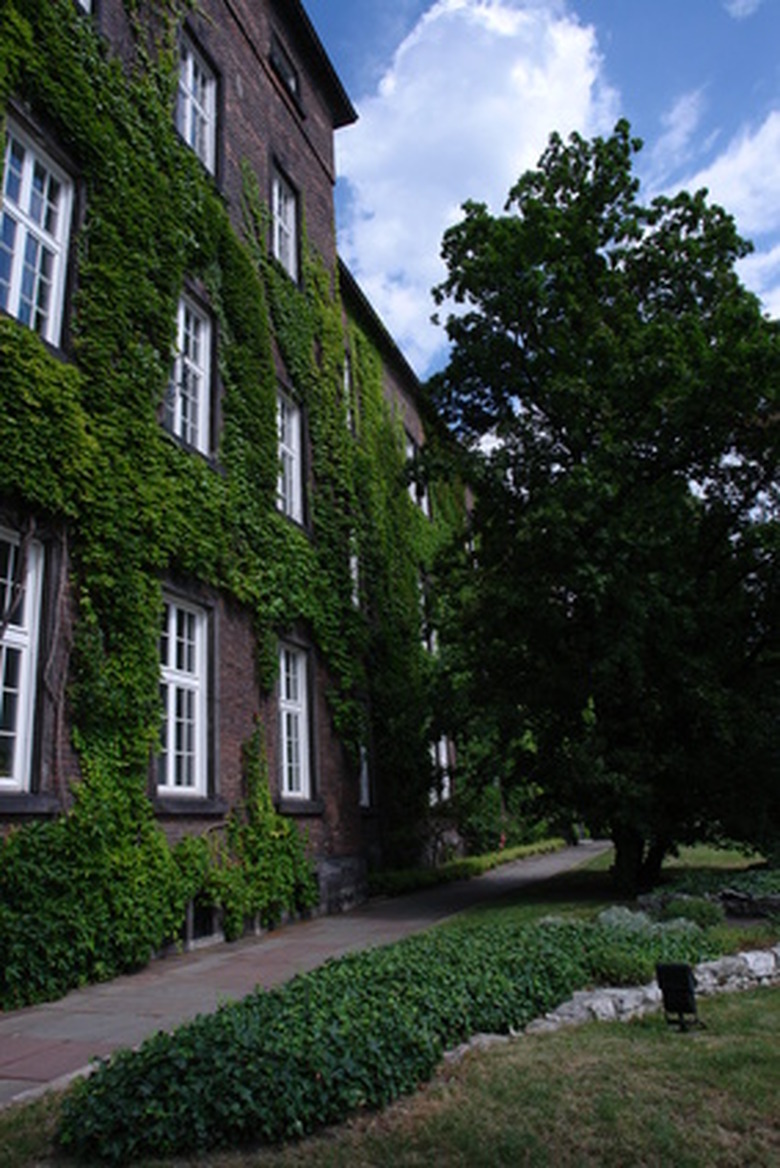Fastest Growing Ivy Vines
Fast-growing ivy can quickly cover an unsightly architectural feature, block an unpleasant view or provide privacy. It is virtually care free, requiring only an occasional pruning to contain its size. Most varieties of ivy show brilliant fall color, and many varieties produce berries that birds enjoy.
Virginia Creeper
Native to the United States, Virginia creeper (Parthenocissus quinquefolia) is an excellent, less invasive stand-in for the more robust and possibly invasive English ivy. It has the same trademark: five-lobed leaves with prominent colored veins. The deep green leaves turn burgundy in autumn. Blue-black berries remain on the vines until eaten by birds. Virginia creeper is best grown in full sun to partial shade in fertile, well-drained soil.
- Fast-growing ivy can quickly cover an unsightly architectural feature, block an unpleasant view or provide privacy.
- Most varieties of ivy show brilliant fall color, and many varieties produce berries that birds enjoy.
Boston Ivy
A fast-growing vine to cover masonry buildings, Boston ivy (Parthenocissus tricuspidata) climbs the buildings quickly and easily. It grows 50 to 60 feet high and is tolerant of all soil types, growing well in full sun or shade. The leaves emerge in spring a reddish bronze. Bright, deep green during summer, they turn shades of scarlet, purple or orange in autumn. Grape-like clusters of bluish-black berries persist on the vines through winter. Boston ivy is well adapted to urban growing conditions.
English Ivy
A fast-growing evergreen vine, English ivy (Hedera helix) grows best in rich, moist, organic soil similar to that of a woodland area. It grows in full sun to full shade and can become invasive in many areas if left unchecked. English ivy has 2- to 4-inch leaves with three to five lobes and prominent white or yellow-green veins. It makes an excellent ground cover or climbing a wall or fence.
- A fast-growing vine to cover masonry buildings, Boston ivy (Parthenocissus tricuspidata) climbs the buildings quickly and easily.
- A fast-growing evergreen vine, English ivy (Hedera helix) grows best in rich, moist, organic soil similar to that of a woodland area.
